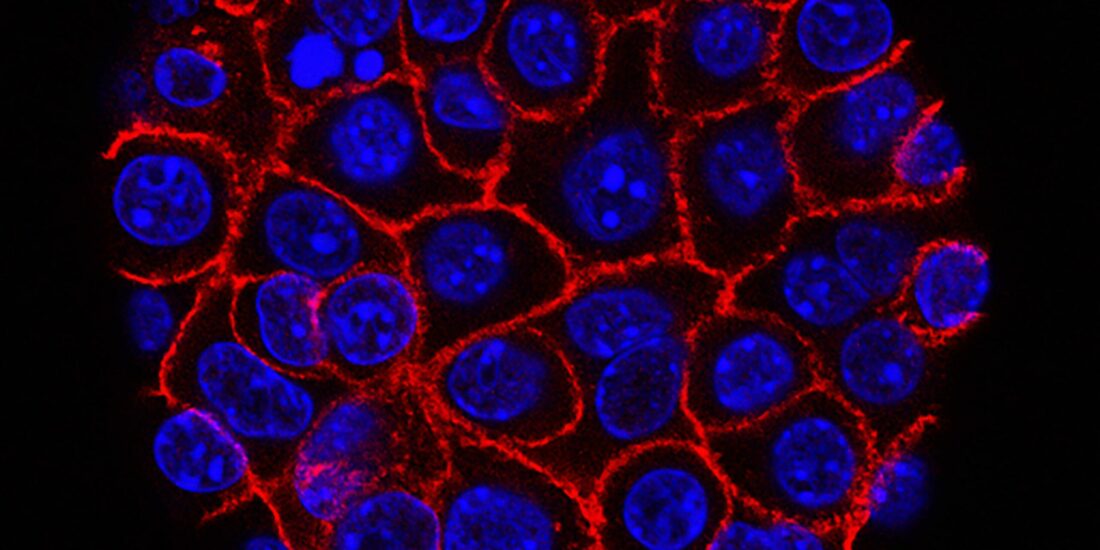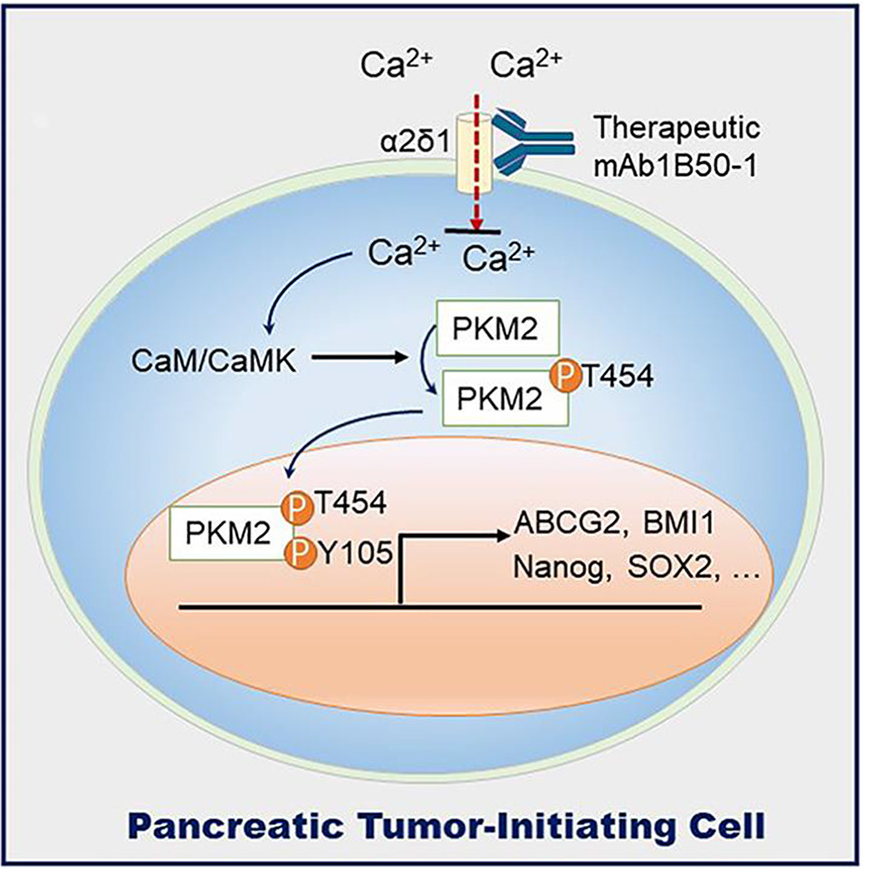Calcium channel α2δ1 is essential for pancreatic tumor-initiating cells through sequential phosphorylation of PKM2
By Jingtao Liu, Ming Tao, Wei Zhao, Qingru Song, Xiaodan Yang, Meng Li, Yanhua Zhang, Dianrong Xiu, and Zhiqian Zhang
Journal Pre-proof to appear in Cellular and Molecular Gastroenterology and Hepatology. Accepted Date: 7 October 2022. DOI: https://doi.org/10.1016/j.jcmgh.2022.10.006
Abstract
Background & Aims
Tumor-initiating cells (TICs) drive pancreatic cancer tumorigenesis, therapeutic resistance and metastasis. However, TICs are highly plastic and heterogenous, which impede the robust identification and targeted therapy of such a population. The aim of this study is to identify surface marker and therapeutic target for pancreatic TICs.
Methods
We isolated voltage-gated calcium channel α2δ1 subunit (isoform 5)-positive subpopulation from pancreatic cancer cell lines and freshly resected primary tissues by fluorescence-activated cell sorting, and evaluated their TIC properties by spheroid formation and tumorigenic assays. Coimmunoprecipitation was employed to identify the direct substrate of CaMKⅡδ.
Results
We demonstrate that the voltage-gated calcium channel α2δ1 subunit (isoform 5) marks a subpopulation of pancreatic TICs with the highest TIC frequency among the known pancreatic TIC markers tested. Furthermore, α2δ1 is functionally sufficient and indispensable to promote TIC properties by mediating Ca2+ influx, which activates CaMKⅡδ to directly phosphorylate PKM2 at T454 that results in subsequent phosphorylation at Y105 to translocate into nucleus, enhancing the stem-like properties. Interestingly, blocking α2δ1 with its specific antibody has remarkably therapeutic effects on pancreatic cancer xenografts by reducing TICs.
Conclusions
α2δ1 promotes pancreatic TIC properties through sequential phosphorylation of PKM2 mediated by CaMKⅡδ, and targeting α2δ1 provides a therapeutic strategy against TICs for pancreatic cancer.


